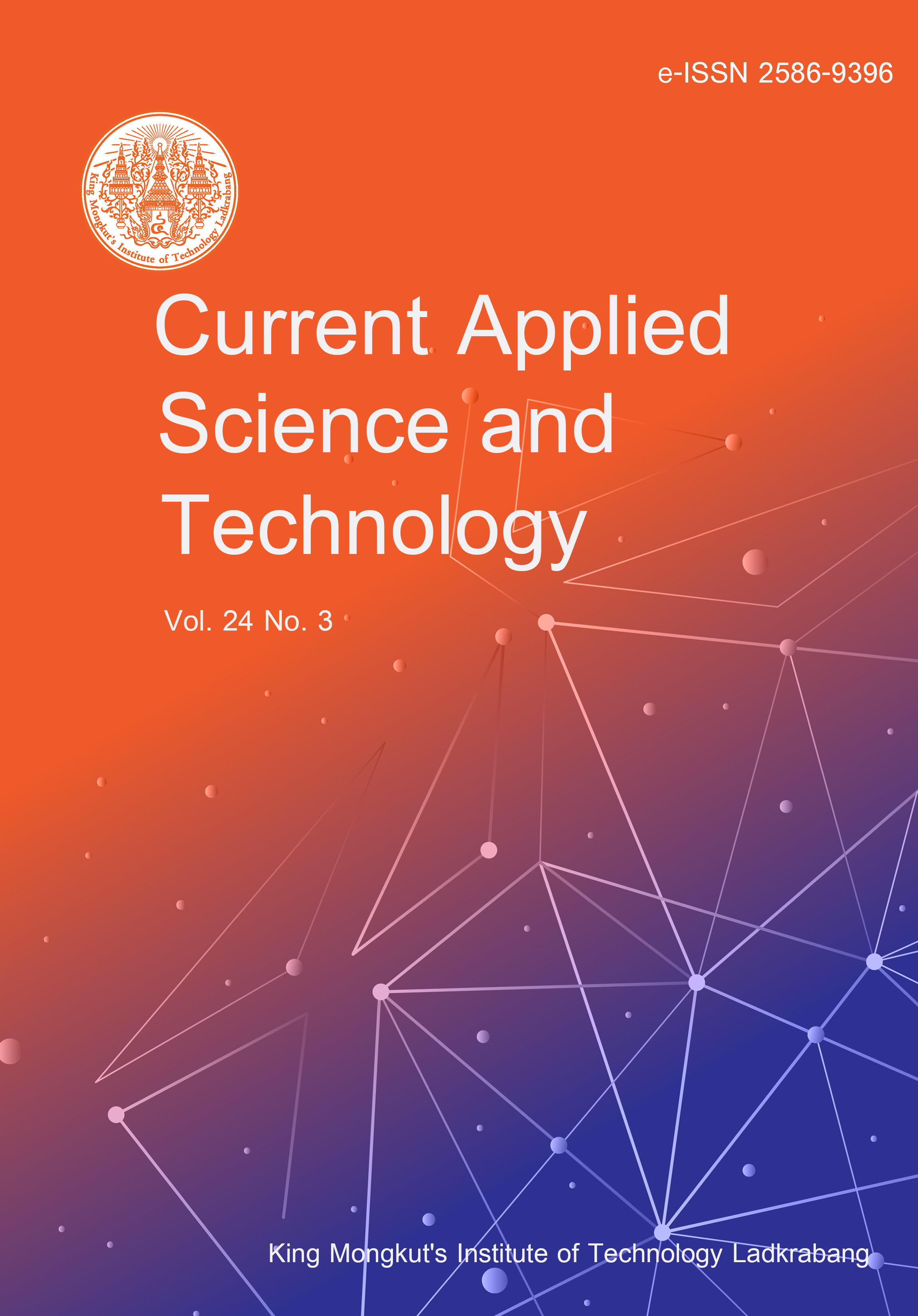New Ratio Estimators for Population Mean under Unequal Probability Sampling Without Replacement in the Presence of Missing Data: A Case Study on Fine Particulate Matter in Bangkok, Thailand
Main Article Content
Abstract
Missing data are frequently present in datasets and give rise to a myriad of issues that significantly affect data utilization. The missing data needs to be handled before data can be efficiently estimated and applied. New ratio estimators for population mean were proposed for use when data are missing completely at random and for a more flexible situation where missing data are missing at random in the study variable under unequal probability sampling without replacement. Furthermore, the variance estimators of the proposed ratio estimators were investigated under a reverse framework. We show theoretically that the proposed estimators were approximately unbiased estimators. The proposed estimators were utilized in simulation studies and were applied to the study of fine particulate matter data in Suan Luang District, Bangkok, Thailand in order to see how the proposed estimators performed. The results from the application to fine particulate matter showed that the ratio estimators and their variance estimators worked better than existing estimators, producing less estimated variances. Therefore, they could be applied to estimate the average fine particulate matter even when missing values appeared.
Article Details

This work is licensed under a Creative Commons Attribution-NonCommercial-NoDerivatives 4.0 International License.
Copyright Transfer Statement
The copyright of this article is transferred to Current Applied Science and Technology journal with effect if and when the article is accepted for publication. The copyright transfer covers the exclusive right to reproduce and distribute the article, including reprints, translations, photographic reproductions, electronic form (offline, online) or any other reproductions of similar nature.
The author warrants that this contribution is original and that he/she has full power to make this grant. The author signs for and accepts responsibility for releasing this material on behalf of any and all co-authors.
Here is the link for download: Copyright transfer form.pdf
References
Cochran, W.G., 1977. Sampling Techniques. New York: John Wiley and Sons.
Bacanli, S. and Kadilar, C., 2008. Ratio estimators with unequal probability designs. Pakistan Journal of Statistics, 24(3), 167-172.
Horvitz, D.F. and Thompson, D.J., 1952. A generalization of sampling without replacement from a finite universe. Journal of the American Statistical Association, 47(260), 663-685, https://doi.org/10.2307/2280784.
Hájek, J., 1981. Sampling from Finite Population. New York, Marcel Dekker.
Särndal, C.-E., Swensson, B. and Wretman, J., 1992. Model Assisted Survey Sampling. Berlin: Springer-Verlag Publishing.
Thongsak, N. and Lawson, N., 2022. Bias and mean square error reduction by changing the shape of the distribution of an auxiliary variable: application to air pollution data in Nan, Thailand. Mathematical Population Studies, 30(3), https://doi.org/10.1080/08898480.2022.2145790.
Thongsak, N. and Lawson, N., 2022. Classes of combined population mean estimators utilizing transformed variables under double sampling with application to air pollution in Chiang Rai, Thailand. Songklanakarin Journal of Science and Technology, 44(5), 1390-1398.
Thongsak, N. and Lawson, N., 2022. A combined family of dual to ratio estimators using a transformed auxiliary variable. Lobachevskii Journal of Mathematics, 43(9), 2621-2633.
Lawson, N., 2023. An improved family of estimators for estimating population mean using a transformed auxiliary variable under double sampling. Songklanakarin Journal of Science and Technology, 45(2), 165-172.
Lawson, N., 2017. Variance estimation in the presence of nonresponse under probability proportional to size sampling. Proceedings of the 6th Annual International Conference on
Computational Mathematics, Computational Geometry and Statistics (CMCGS 2017), Singapore, March 6-7, 2017, https://doi.org/10.5176/2251-1911_CMCGS17.32.
Ponkaew, C. and Lawson, N., 2018. A new ratio estimator for population total in the presence of nonresponse under unequal probability sampling without replacement. Thai Journal of Mathematics, Special Issue 2018, 417-429.
Särndal, C.E. and Lundström, S., 2005. Estimation in surveys with nonresponse. New York: John Wiley and Sons.
Ponkaew, C. and Lawson, N. 2019. Estimating variance in the presence of nonresponse under unequal probability sampling. Suranaree Journal of Science and Technology, 26(3), 293-302.
Lawson, N. and Ponkaew, C., 2019. New generalized regression estimator in the presence of nonresponse under unequal probability sampling. Communications in Statistics - Theory and Methods, 48(10), 2483-2498, https://doi.org/10.1080/03610926.2018.1465091.
Lawson, N. and Siripanich, P., 2020. A new generalized regression estimator and variance estimation for unequal probability sampling without replacement for missing data. Communications in Statistics - Theory and Methods, 51(18), 6296-6318, https://doi.org/10.1080/03610926.2020.1860224.
Ponkaew, C. and Lawson, N., 2023. New generalized regression estimators using a ratio method and its variance estimation for unequal probability sampling without replacement in the presence of nonresponse. Current Applied Science and Technology, 23(2), https://doi.org/10.55003/cast.2022.02.23.007.
Ponkaew, C. and Lawson, N., 2022. New estimators for estimating population total: an application to water demand in Thailand under unequal probability sampling without replacement for missing data. PeerJ, https://doi.org/10.7717/peerj.14551.
Chodjuntug, K. and Lawson, N., 2022. Imputation for estimating the population mean in the presence of nonresponse, with application to fine particle density in Bangkok. Mathematical Population Studies, 29(4), 204-225, https://doi.org/10.1080/08898480.2021.1997466.
Chodjuntug, K. and Lawson, N., 2022. A chain regression exponential type imputation method for mean estimation in the presence of missing data. Songklanakarin Journal of Science and Technology, 44(4), 1109-1118.
Lawson, N., 2023. New imputation method for estimating population mean in the presence of missing data. Lobachevskii Journal of Mathematics, 44(9). (article in print).
R Core Team., 2021. R : A Language and Environment for Statistical Computing. R Foundation for Statistical Computing, Vienna, Austria. [online] Available at: https://www.R-project.org/.
Air Quality and Noise Management Division Bangkok. 2023. Report Measurement. [online] Available at: https://bangkokairquality.com/bma/report?lang=en.
Midzuno, H., 1952. On sampling system with probability proportional to sum of sizes. Annals of the Institute of Statistical Mathematics, 3(1), 99-107.






